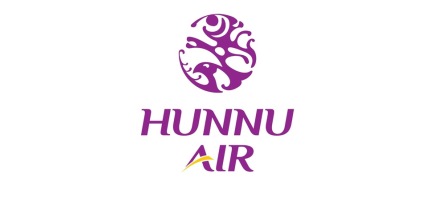Events
| Name | organizer | Where |
|---|---|---|
| MBCC “Doing Business with Mongolia seminar and Christmas Receptiom” Dec 10. 2025 London UK | MBCCI | London UK Goodman LLC |
NEWS
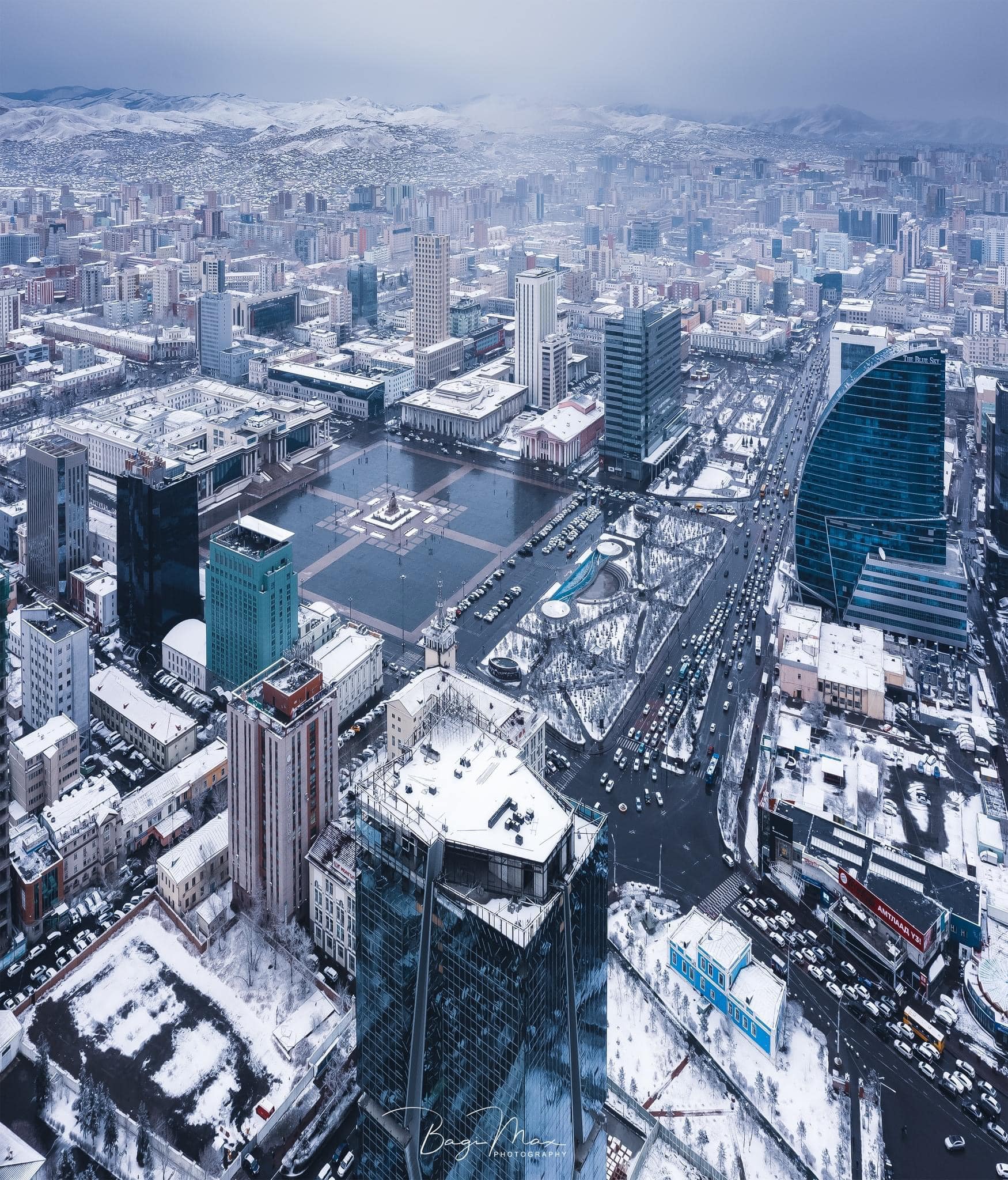
Investment opportunities and challenges in Mongolia discussed www.montsame.mn
The American Chamber of Commerce in Mongolia (AmCham Mongolia) organized a discussion and meeting on August 17, 2022, on investment opportunities and challenges in Mongolia. Ambassador Extraordinary and Plenipotentiary to Mongolia Michael S. Klecheski gave a speech at the meeting and shared details of the 2022 Investment Climate Statement issued by the U.S. State Department, touching on issues that deserve further attention. He noted, "The U.S. Embassy in Ulaanbaatar’s 2022 Mongolia Investment Climate Statement drew input from the foreign and domestic business community and others to describe Mongolia’s investment climate. It highlights that Mongolia’s natural and human resources remain a real draw for foreign and domestic investors; and underscores that a more stable, predictable, and transparent legal and regulatory framework would help increase investments and jobs in Mongolia.”
The Deputy Minister of Justice and Home Affairs, B. Solongoo, also attended the AmCham Monthly Meeting. She provided an update on the development, substance, and conceptual direction of revised amendments to the Investment Law and addressed questions from attendees. She highlighted, "It is clear that Mongolia's investment is overly dependent on a single industry because it is closely tied to a well-known mega-project. The fundamental purpose of the law under consideration is to boost investment, the economy, and investor confidence and conviction. Priority one is to draw in new investment prospects, but before that, we are trying to ensure that the ‘transitional arrangements’ take existing investors' suggestions and grievances into account.”
Michael Richmond, the Senior Commercial Specialist at the U.S. Embassy, served as moderator for an engaging panel discussion with Deputy Chairwoman of AmCham Mongolia and Chairman of the Board of Directors of Monpolymet Group N. Munkhnasan, Country Director of PwC Mongolia Shaukat Tapia, and economist and associate professor at the University of Finance and Economics J. Delgersaikhan. According to Shaukat Tapia, improving the FDI environment is essential since Mongolia has great potential to draw in investment. J. Delgersaikhan stated that laws not only need to be written but also implemented, noting that the application of the rule of law, law enforcement, and the justice system should be thoroughly examined and developed for the investment legal framework.
The Chairman of the Board of Directors of Monpolymet Group and Deputy Chairwoman of AmCham Mongolia, N. Munkhnasan, said, "I believe that the revisions to the Law on Investment will focus on the inequality of previous laws and legal regulations, improving their coordination and ensuring the practical implementation of the law."
In concluding the discussion, Michael Richmond stated that the government and legislators should solicit feedback from business owners to fully represent the views of all stakeholders when developing legislation, and that frequent meetings and discussions be held while revising the Investment Law. AmCham Mongolia stated that it was ready to keep collaborating with the executive and legislative branches of government to strengthen the business environment.
More than 80 people attended the August Monthly Meeting, including AmCham Mongolia members, foreign and domestic investors, and media representatives.
Source: amcham.mn

Producers from ‘Netflix, ‘HBO’ and ‘Warner Bros’ to arrive in Mongolia www.montsame.mn
At an invitation of the Mongolian National Film Council (MNFC) under the Ministry of Culture, producers and managers of the world’s major film studios, production companies, and companies such as Netflix, HBO, Warner Bros, Paramount Pictures, Discovery, National Geography, Living films and MTV will arrive in Mongolia. Specifically, producers of films namely as ‘Wonder Woman 1984,’ ‘Greenland,’ ‘Hangover,’ ‘Sweet home’ and ‘All of us are dead’ will arrive in the country, meet with Minister of Culture Ch.Nomin and participate in a ‘Fam-Tour’ event to be co-organized by the MNFC.
During their visit, they will exchange views with Mongolian filmmakers, directors and producers on making works jointly, participate in meetings to promote artists, and also get acquainted with studios, shooting areas, and productions made by Mongolian filmmakers.
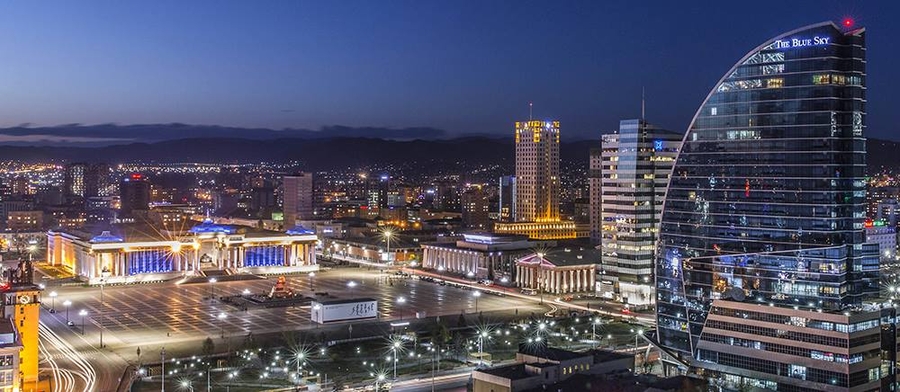
Mongolia issues seven international bonds since 2012 www.news.mn
Since 2012, Mongolia has issued seven international bonds worth USD 5.2bn, with all but the first sovereign bond, the Chinggis Bond—named after founder of the Mongol Empire, Chinggis Khaan, or Genghis Khan—used to finance state budget deficits. It’s also a time to once more observe that the Chinggis Bond, the only bond used to finance projects, has been mismanaged.
Since 2013, Mongolia has drawn nearly USD 3.7bn in swap agreement loans from China’s central bank. As of 2020, it had repaid $1.5bn of the lent capital, while receiving another extension on debt repayment stretching to the end of 2023. This loan is one of the first Mongolia must repay.
With the exception of 2018, Mongolia’s annual state budget expenditure has exceeded its income throughout the past decade. (source: bne IntelliNews )
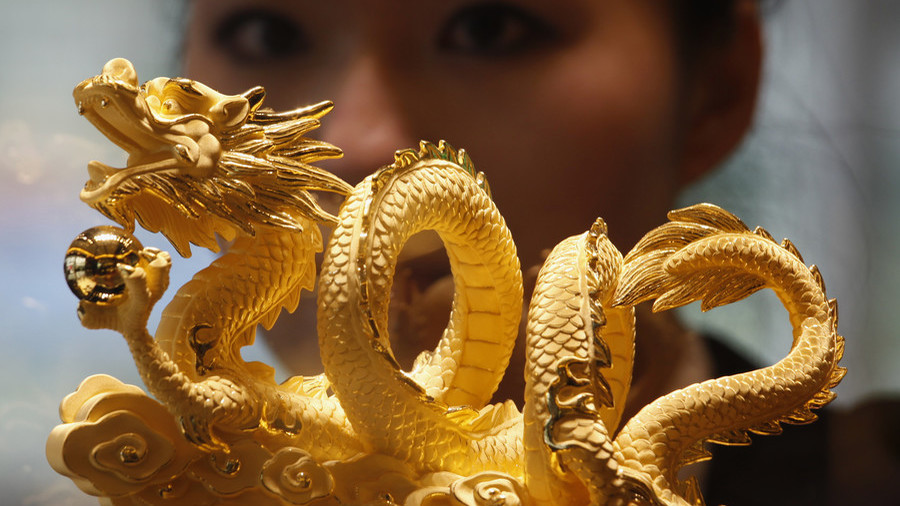
The 5,800 legal entities with Chinese investment registered in Mongolia www.news.mn
In recent years, the comprehensive strategic partnership between Mongolia and China has developed rapidly, leading to accelerated investment and trade activities between the two countries. From the 5,800 legal entities with Chinese investment registered in Mongolia, 1,690 have stable operations and pay taxes.
China is Mongolia’s biggest investor as it accounts for 21 percent offoreign direct investment (FDI) to the country and over 50 percent of Mongolian companies with foreign equity. China’s investment in Mongolia reached USD 108 million, of which 68percent comes from the mining sector, and 21 percent from trade andthe food sector.
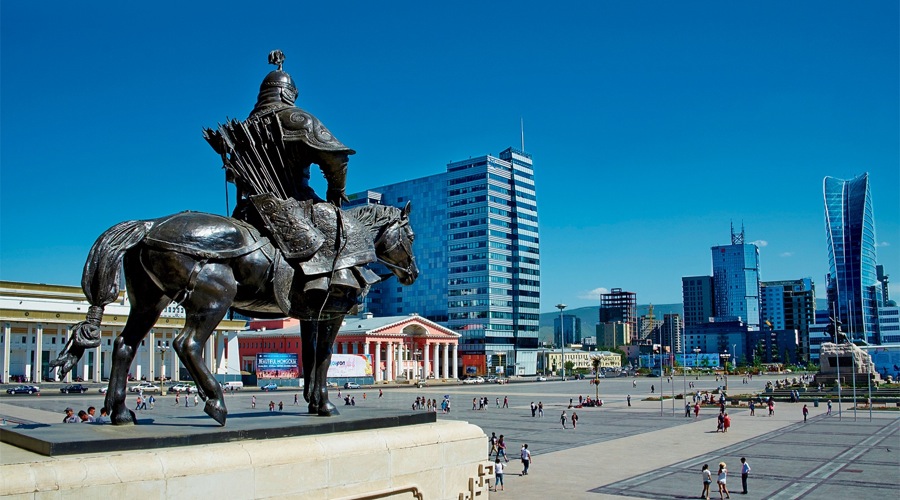
National Email Service launches operations www.montsame.mn
In May, the Cabinet made a decision to launch National Email Service within this year. In accordance with the decision, works are underway to issue email addresses to the citizens, reported L.Enkh-Amgalan, the Acting Minister of Digital Development and Communications, during the press conference to present the decisions made at the Cabinet meeting.
In specific, the Ministry started issuing email addresses to citizens over the age of 16 through the E-Mongolia platform. Launching the email service will allow citizens to directly engage with civil servants and is believed to eliminate bureaucracy and save time and money. For example, important notifications will be delivered to the citizens to remind, for instance, the expiration date of the passport, driver’s license, national ID card, etc., and other important information. Moreover, citizens will be able to freely file complaints and receive necessary information with the help of the email service.
“As of today, 680 government services have been digitalized and added to the E-Mongolia platform and now we are working to integrate the services of local administration units to the platform”, said the Acting Minister.
According to the ‘Household and Personal Information, Communication and Information Technology Usage Survey’ conducted by the Ministry of Digital Development and Communications and the National Statistics Office of Mongolia in 2021, 43.8 percent of the survey’s participants had sufficient digital literacy skills.

Mongolia launches guidelines on environmental, social and governance and sustainability reporting standards www.undp.org
As part of the concerted effort to increase and mobilize resources from the private sector for Mongolia’s progress towards achieving the SDGs, development partners, including UNDP, partnered with Mongolia’s financial sector authorities and released “The ESG and Sustainability Reporting Guidance for Mongolian Companies” for listed companies, prospective issuers, and other interested companies.
The Guidance provides an overview of global sustainability reporting frameworks and trends, followed by an eight-step outline of how listed companies and other issuers can build the capacity to report on sustainability. Also included in the document are lists of indicators that companies can select from to fulfill their sustainability disclosure requirements.
“By introducing this ESG disclosure and sustainability reporting guidance in line with international standards, we hope to harness good ESG management and disclosure market practice and help issuers and other financial institutions in creating long-term value that benefits Mongolian financial market as a whole. We also believe that the public, investors, and stakeholders will benefit from improved transparency and disclosure practices” says Mr. Bayarsaikhan Dembereldash, Chair of the Financial Regulatory Commission (FRC).
The Guidance also outlines how ESG reporting could benefit the companies; especially, in terms of meeting international investors’ demands and accessing a more diverse range of longer terms financing while complying with the regulators’ requirements and further strengthening their brand reputation internally and externally.
“The Government of Mongolia is taking important initiatives to revive the local economy and transform it in-line with sustainable development principles. As a main driver to thrive economies, businesses and private sector entities must commit to sustainable corporate practices, including improving its transparency and alignment with the Sustainable Development Goals. Therefore, the UN in Mongolia strongly encourages the Government of Mongolia to demonstrate its leadership in implementing the Integrated National Financing Framework and strategy with its reporting mechanism to catalyze transformative change and accelerate implementation of the SDGs for inclusive and sustainable development for all, which is envisaged in Mongolia’s Vision 2050,” said Mr. Tapan Mishra, UN Resident Coordinator in Mongolia.
Efforts to integrate sustainability in financial analysis and investments globally are often hindered by a lack of quality ESG reporting data. This is also the case in Mongolia where, according to the analysis of a recent study carried out by the Mongolian Sustainable Finance Association (MSFA), only 13% of companies listed on the stock exchange publicly disclose their environmental indicators.
UNDP Mongolia’s Resident Representative Ms. Elaine Conkievich emphasized the importance of the Sustainability Reporting Guidance and stated, “The adoption of ESG and sustainability reporting standards provides the private sector with the possibility to unlock a variety of opportunities and access potential investment opportunities while integrating sustainability factors into their business decisions and thus contributing towards achieving the SDGs.”
“The Sustainability Reporting Guidance for Mongolian Companies” was developed through a partnership between the FRC, MSE, MSFA, International Finance Corporation, UNDP-hosted Financial Centres for Sustainability Network, United Nations Environment Programme, United Nations Development Programme and United Nations Resident Coordinators’ Office in Mongolia, with support from the Global Environment Facility and UN Joint SDG Fund.
***
UNDP is the leading United Nations organization fighting to end the injustice of poverty, inequality, and climate change. Working with our broad network of experts and partners in 170 countries, we help nations to build integrated, lasting solutions for people and planet. Learn more at mn.undp.org or follow at @UNDPMongolia.
For further inquiries:
Delgernaran Tumurtogoo | National Project Coordinator | UN Joint Programme on “Rolling Out an Integrated Approach to the SDG financing in Mongolia” | UNDP Mongolia | delgernaran.tumurtogoo@undp.org
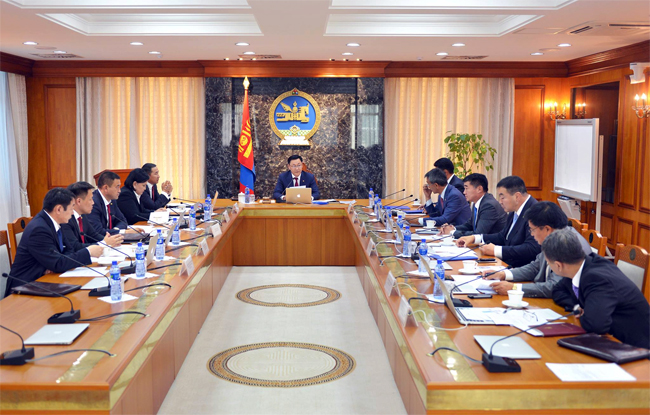
Implementation of government's 2020-2024 action plan is 48.9 percent www.montsame.mn
Chief of Cabinet Secretariat Ts.Nyamdorj presented the progress of the implementation of the Government Action Plan for 2020-2024 and the Development Plan of Mongolia for 2022 to the Cabinet members.
As of the first half of this year, the implementation of the Government Action Plan for 2020-2024 is at 48.9 percent. During the cabinet meeting, the relevant officials were instructed to bring the objectives and measures that are delayed depending on the management and organization to the target level at the end of this year, and to study and solve the possibilities and conditions for the implementation of the ones that are delayed due to finance and investment by attracting foreign loans, aid, and private sector investment in addition to the state budget. Moreover, the Prime Minister instructed to have draft laws to be submitted to the State Great Khural in 2022 discussed at the Cabinet meetings within this year.
The Development Plan of Mongolia for 2022 is completely aligned with the general guidelines for the country’s development in 2021-2025 and the action plan for 2020-2024. The plan has been approved with 300 projects and measures with 6 groups and 23 goals, and as of the first half of this year, 47.6 percent of the implementation has been achieved. The members of the government and the heads of relevant agencies were instructed to clearly reflect the amount of funds spent on the performance of that year's work, the fulfillment of the criteria, and the results in the report on the implementation of projects and measures.

Gross industrial output increased by 2.0 percent from the previous month www.montsame.mn
By the preliminary results, in the first 7 months of 2022, the gross industrial output reached MNT 10.6 trillion, decreased by MNT 244.3 billion (2.3%) from the same period of the previous year. This decrease was mainly due to MNT 509.3 billion (6.7%) decrease in mining and quarrying production gross output. Also, the manufacturing production output increased by MNT 202.5 billion (8.8%), the electricity, thermal energy and water supply production output increased by MNT 44.9 billion (5.7%) and the water supply, and sewerage, waste management, and remediation activities production output increased by MNT 17.7 billion (19.6%) from the previous year.
In July 2022, the gross industrial output reached MNT 2.0 trillion, increased by MNT 40.4 billion (2.0%) from the previous month. In July 2022, the sales of industrial products reached MNT 2.8 trillion, increased by MNT 377.4 billion (15.3%) from the previous month.
By the preliminary results of the first 7 months of 2022, the mining and quarrying gross output reached MNT 7.1 trillion, decreased by MNT 509.3 billion (6.7%) from the same period of previous year. This decrease was mainly due to decreases in mining of coal and lignite by 428.0 billion (20.6%) and extraction of crude petroleum by MNT 403.8 billion (73.7%) from same period of the previous year. By the preliminary results of the first 7 months of 2022, the mining and quarrying sector, extraction of zinc concentrate and silver concentrate increased by 36.9-85.0 percent compared to the same period of the previous year. In the mining and quarrying sector, the extraction of iron ore, gold, brown coal, copper concentrate, fluorspar, hard coal and crude oil decreased by 2.5–87.9 percent.
In the manufacturing sector, production of spirit, cement, pure water, soft drink, juice, alcoholic beverage, cashmere products, lime and combed cashmere increased by 5.6-81.0 percent compared to the previous year. In the manufacturing sector, productions of copper cathode (99%), milk, cigarettes, coal briquette, wheat flour, face covering, metal steel, meat, sanitizer and concentrated coal decreased by 2.6–96.6 percent compared to the same period of the previous year.
By the preliminary results of the first 7 months of 2022, the sales of industrial products reached MNT 14.3 trillion, decreased by MNT 104.1 billion (0.7%) compared to the same period of the previous year. This decrease mainly resulted from MNT 392.3 billion (3.7%) decrease in sales of mining and quarrying products.
The sales of mining and quarrying products decreased by MNT 392.3 billion (3.7%) compared to the same period of the previous year. This decrease mainly resulted from MNT 351.4 billion (68.3%) decrease in sales of crude petroleum products, MNT 192.1 billion (2.7%) decrease in sales of mining of metal ores products and MNT 137.5 billion (63.8%) decrease in sales of other mining and quarrying products, respectively.
By the preliminary results of the first 7 months of 2022, the total sales of industrial products, MNT 8.3 trillion was export, of which 7.9 trillion was export of mining and quarrying output. The mining and quarrying products structure shows that 66.2 percent was metal ores, 31.2 percent was coal and lignite, 2.1 percent was extraction of crude petroleum and 0.5 percent was other mining. In July 2022, the seasonally adjusted industrial production index was 146.0 (2015=100), decreased by 4.7 percentage point from the same period of the previous year.
Source: National Statistics Office of Mongolia
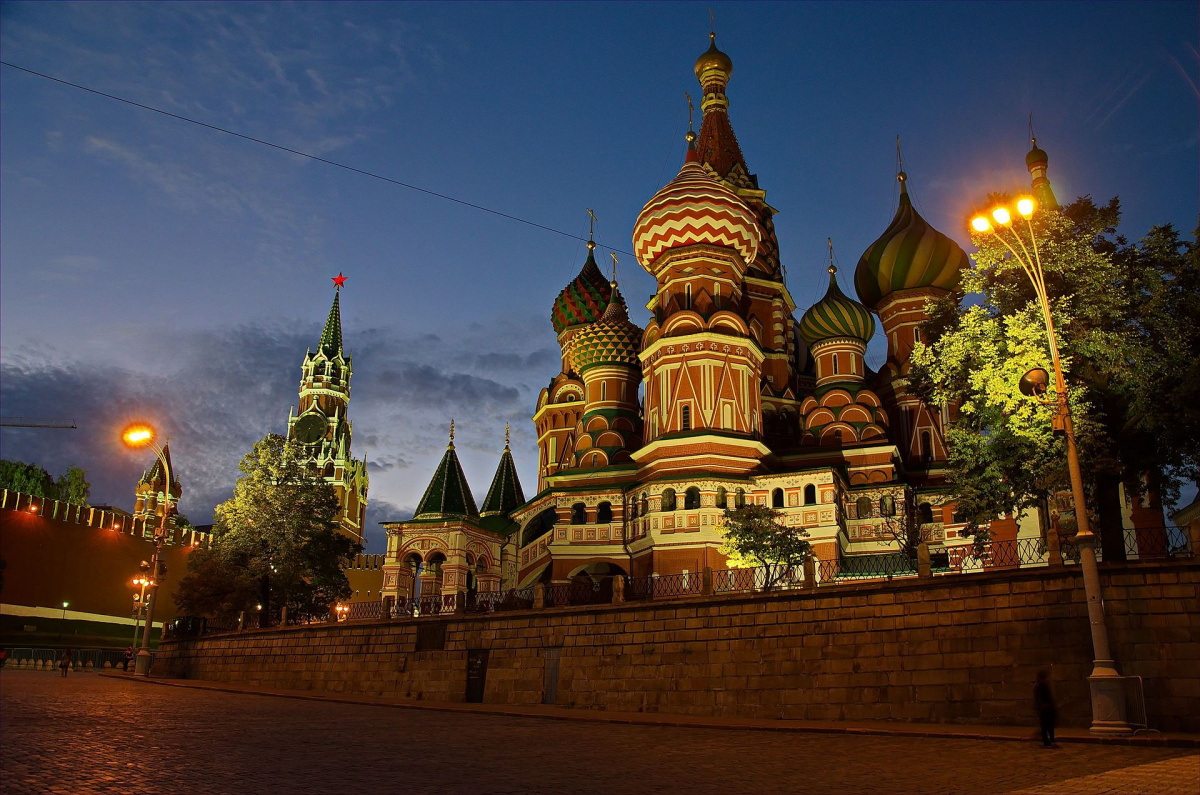
Russia offers trade partners to join its SWIFT alternative www.rt.com
Russia has offered countries belonging to the Shanghai Cooperation Organization (SCO) to join its financial messaging system (SPFS), the Russian equivalent of SWIFT. Moscow wants to boost the volume of settlements in national currencies, the country's Economic Development Minister Maxim Reshetnikov said on Tuesday.
“In order to ensure uninterrupted cooperation between our banks, we suggest that members of the organization join the Russian financial messaging system,” Reshetnikov said in his video address to participants at the SCO forum in Uzbekistan.
Reshetnikov noted that SCO countries need to continue to promote full compatibility of national payment systems and boost the volume of mutual settlements in national currencies.
“We already see positive results, for example, a quarter of the trade turnover between Russia and China is settled in rubles and yuan,” Reshetnikov said.
The SCO currently comprises eight member states: China, India, Kazakhstan, Kyrgyzstan, Russia, Tajikistan, Pakistan and Uzbekistan, while its partners and associates also include Afghanistan, Belarus, Iran, Mongolia, Armenia, Azerbaijan, Cambodia, Nepal, Turkey and Sri Lanka. The organization’s work focuses mainly on security issues, but it also deals with regional development tasks.
Russia has been actively promoting its domestic financial messaging system ever since being cut off from SWIFT as part of Western sanctions imposed on the country over the conflict in Ukraine. Both facilitate financial transactions between banks, but Russia’s SPFS was used only in Russia up until this year, while SWIFT is an internationally adopted system.
- «
- 1
- 2
- 3
- 4
- 5
- 6
- 7
- 8
- 9
- 10
- 11
- 12
- 13
- 14
- 15
- 16
- 17
- 18
- 19
- 20
- 21
- 22
- 23
- 24
- 25
- 26
- 27
- 28
- 29
- 30
- 31
- 32
- 33
- 34
- 35
- 36
- 37
- 38
- 39
- 40
- 41
- 42
- 43
- 44
- 45
- 46
- 47
- 48
- 49
- 50
- 51
- 52
- 53
- 54
- 55
- 56
- 57
- 58
- 59
- 60
- 61
- 62
- 63
- 64
- 65
- 66
- 67
- 68
- 69
- 70
- 71
- 72
- 73
- 74
- 75
- 76
- 77
- 78
- 79
- 80
- 81
- 82
- 83
- 84
- 85
- 86
- 87
- 88
- 89
- 90
- 91
- 92
- 93
- 94
- 95
- 96
- 97
- 98
- 99
- 100
- 101
- 102
- 103
- 104
- 105
- 106
- 107
- 108
- 109
- 110
- 111
- 112
- 113
- 114
- 115
- 116
- 117
- 118
- 119
- 120
- 121
- 122
- 123
- 124
- 125
- 126
- 127
- 128
- 129
- 130
- 131
- 132
- 133
- 134
- 135
- 136
- 137
- 138
- 139
- 140
- 141
- 142
- 143
- 144
- 145
- 146
- 147
- 148
- 149
- 150
- 151
- 152
- 153
- 154
- 155
- 156
- 157
- 158
- 159
- 160
- 161
- 162
- 163
- 164
- 165
- 166
- 167
- 168
- 169
- 170
- 171
- 172
- 173
- 174
- 175
- 176
- 177
- 178
- 179
- 180
- 181
- 182
- 183
- 184
- 185
- 186
- 187
- 188
- 189
- 190
- 191
- 192
- 193
- 194
- 195
- 196
- 197
- 198
- 199
- 200
- 201
- 202
- 203
- 204
- 205
- 206
- 207
- 208
- 209
- 210
- 211
- 212
- 213
- 214
- 215
- 216
- 217
- 218
- 219
- 220
- 221
- 222
- 223
- 224
- 225
- 226
- 227
- 228
- 229
- 230
- 231
- 232
- 233
- 234
- 235
- 236
- 237
- 238
- 239
- 240
- 241
- 242
- 243
- 244
- 245
- 246
- 247
- 248
- 249
- 250
- 251
- 252
- 253
- 254
- 255
- 256
- 257
- 258
- 259
- 260
- 261
- 262
- 263
- 264
- 265
- 266
- 267
- 268
- 269
- 270
- 271
- 272
- 273
- 274
- 275
- 276
- 277
- 278
- 279
- 280
- 281
- 282
- 283
- 284
- 285
- 286
- 287
- 288
- 289
- 290
- 291
- 292
- 293
- 294
- 295
- 296
- 297
- 298
- 299
- 300
- 301
- 302
- 303
- 304
- 305
- 306
- 307
- 308
- 309
- 310
- 311
- 312
- 313
- 314
- 315
- 316
- 317
- 318
- 319
- 320
- 321
- 322
- 323
- 324
- 325
- 326
- 327
- 328
- 329
- 330
- 331
- 332
- 333
- 334
- 335
- 336
- 337
- 338
- 339
- 340
- 341
- 342
- 343
- 344
- 345
- 346
- 347
- 348
- 349
- 350
- 351
- 352
- 353
- 354
- 355
- 356
- 357
- 358
- 359
- 360
- 361
- 362
- 363
- 364
- 365
- 366
- 367
- 368
- 369
- 370
- 371
- 372
- 373
- 374
- 375
- 376
- 377
- 378
- 379
- 380
- 381
- 382
- 383
- 384
- 385
- 386
- 387
- 388
- 389
- 390
- 391
- 392
- 393
- 394
- 395
- 396
- 397
- 398
- 399
- 400
- 401
- 402
- 403
- 404
- 405
- 406
- 407
- 408
- 409
- 410
- 411
- 412
- 413
- 414
- 415
- 416
- 417
- 418
- 419
- 420
- 421
- 422
- 423
- 424
- 425
- 426
- 427
- 428
- 429
- 430
- 431
- 432
- 433
- 434
- 435
- 436
- 437
- 438
- 439
- 440
- 441
- 442
- 443
- 444
- 445
- 446
- 447
- 448
- 449
- 450
- 451
- 452
- 453
- 454
- 455
- 456
- 457
- 458
- 459
- 460
- 461
- 462
- 463
- 464
- 465
- 466
- 467
- 468
- 469
- 470
- 471
- 472
- 473
- 474
- 475
- 476
- 477
- 478
- 479
- 480
- 481
- 482
- 483
- 484
- 485
- 486
- 487
- 488
- 489
- 490
- 491
- 492
- 493
- 494
- 495
- 496
- 497
- 498
- 499
- 500
- 501
- 502
- 503
- 504
- 505
- 506
- 507
- 508
- 509
- 510
- 511
- 512
- 513
- 514
- 515
- 516
- 517
- 518
- 519
- 520
- 521
- 522
- 523
- 524
- 525
- 526
- 527
- 528
- 529
- 530
- 531
- 532
- 533
- 534
- 535
- 536
- 537
- 538
- 539
- 540
- 541
- 542
- 543
- 544
- 545
- 546
- 547
- 548
- 549
- 550
- 551
- 552
- 553
- 554
- 555
- 556
- 557
- 558
- 559
- 560
- 561
- 562
- 563
- 564
- 565
- 566
- 567
- 568
- 569
- 570
- 571
- 572
- 573
- 574
- 575
- 576
- 577
- 578
- 579
- 580
- 581
- 582
- 583
- 584
- 585
- 586
- 587
- 588
- 589
- 590
- 591
- 592
- 593
- 594
- 595
- 596
- 597
- 598
- 599
- 600
- 601
- 602
- 603
- 604
- 605
- 606
- 607
- 608
- 609
- 610
- 611
- 612
- 613
- 614
- 615
- 616
- 617
- 618
- 619
- 620
- 621
- 622
- 623
- 624
- 625
- 626
- 627
- 628
- 629
- 630
- 631
- 632
- 633
- 634
- 635
- 636
- 637
- 638
- 639
- 640
- 641
- 642
- 643
- 644
- 645
- 646
- 647
- 648
- 649
- 650
- 651
- 652
- 653
- 654
- 655
- 656
- 657
- 658
- 659
- 660
- 661
- 662
- 663
- 664
- 665
- 666
- 667
- 668
- 669
- 670
- 671
- 672
- 673
- 674
- 675
- 676
- 677
- 678
- 679
- 680
- 681
- 682
- 683
- 684
- 685
- 686
- 687
- 688
- 689
- 690
- 691
- 692
- 693
- 694
- 695
- 696
- 697
- 698
- 699
- 700
- 701
- 702
- 703
- 704
- 705
- 706
- 707
- 708
- 709
- 710
- 711
- 712
- 713
- 714
- 715
- 716
- 717
- 718
- 719
- 720
- 721
- 722
- 723
- 724
- 725
- 726
- 727
- 728
- 729
- 730
- 731
- 732
- 733
- 734
- 735
- 736
- 737
- 738
- 739
- 740
- 741
- 742
- 743
- 744
- 745
- 746
- 747
- 748
- 749
- 750
- 751
- 752
- 753
- 754
- 755
- 756
- 757
- 758
- 759
- 760
- 761
- 762
- 763
- 764
- 765
- 766
- 767
- 768
- 769
- 770
- 771
- 772
- 773
- 774
- 775
- 776
- 777
- 778
- 779
- 780
- 781
- 782
- 783
- 784
- 785
- 786
- 787
- 788
- 789
- 790
- 791
- 792
- 793
- 794
- 795
- 796
- 797
- 798
- 799
- 800
- 801
- 802
- 803
- 804
- 805
- 806
- 807
- 808
- 809
- 810
- 811
- 812
- 813
- 814
- 815
- 816
- 817
- 818
- 819
- 820
- 821
- 822
- 823
- 824
- 825
- 826
- 827
- 828
- 829
- 830
- 831
- 832
- 833
- 834
- 835
- 836
- 837
- 838
- 839
- 840
- 841
- 842
- 843
- 844
- 845
- 846
- 847
- 848
- 849
- 850
- 851
- 852
- 853
- 854
- 855
- 856
- 857
- 858
- 859
- 860
- 861
- 862
- 863
- 864
- 865
- 866
- 867
- 868
- 869
- 870
- 871
- 872
- 873
- 874
- 875
- 876
- 877
- 878
- 879
- 880
- 881
- 882
- 883
- 884
- 885
- 886
- 887
- 888
- 889
- 890
- 891
- 892
- 893
- 894
- 895
- 896
- 897
- 898
- 899
- 900
- 901
- 902
- 903
- 904
- 905
- 906
- 907
- 908
- 909
- 910
- 911
- 912
- 913
- 914
- 915
- 916
- 917
- 918
- 919
- 920
- 921
- 922
- 923
- 924
- 925
- 926
- 927
- 928
- 929
- 930
- 931
- 932
- 933
- 934
- 935
- 936
- 937
- 938
- 939
- 940
- 941
- 942
- 943
- 944
- 945
- 946
- 947
- 948
- 949
- 950
- 951
- 952
- 953
- 954
- 955
- 956
- 957
- 958
- 959
- 960
- 961
- 962
- 963
- 964
- 965
- 966
- 967
- 968
- 969
- 970
- 971
- 972
- 973
- 974
- 975
- 976
- 977
- 978
- 979
- 980
- 981
- 982
- 983
- 984
- 985
- 986
- 987
- 988
- 989
- 990
- 991
- 992
- 993
- 994
- 995
- 996
- 997
- 998
- 999
- 1000
- 1001
- 1002
- 1003
- 1004
- 1005
- 1006
- 1007
- 1008
- 1009
- 1010
- 1011
- 1012
- 1013
- 1014
- 1015
- 1016
- 1017
- 1018
- 1019
- 1020
- 1021
- 1022
- 1023
- 1024
- 1025
- 1026
- 1027
- 1028
- 1029
- 1030
- 1031
- 1032
- 1033
- 1034
- 1035
- 1036
- 1037
- 1038
- 1039
- 1040
- 1041
- 1042
- 1043
- 1044
- 1045
- 1046
- 1047
- 1048
- 1049
- 1050
- 1051
- 1052
- 1053
- 1054
- 1055
- 1056
- 1057
- 1058
- 1059
- 1060
- 1061
- 1062
- 1063
- 1064
- 1065
- 1066
- 1067
- 1068
- 1069
- 1070
- 1071
- 1072
- 1073
- 1074
- 1075
- 1076
- 1077
- 1078
- 1079
- 1080
- 1081
- 1082
- 1083
- 1084
- 1085
- 1086
- 1087
- 1088
- 1089
- 1090
- 1091
- 1092
- 1093
- 1094
- 1095
- 1096
- 1097
- 1098
- 1099
- 1100
- 1101
- 1102
- 1103
- 1104
- 1105
- 1106
- 1107
- 1108
- 1109
- 1110
- 1111
- 1112
- 1113
- 1114
- 1115
- 1116
- 1117
- 1118
- 1119
- 1120
- 1121
- 1122
- 1123
- 1124
- 1125
- 1126
- 1127
- 1128
- 1129
- 1130
- 1131
- 1132
- 1133
- 1134
- 1135
- 1136
- 1137
- 1138
- 1139
- 1140
- 1141
- 1142
- 1143
- 1144
- 1145
- 1146
- 1147
- 1148
- 1149
- 1150
- 1151
- 1152
- 1153
- 1154
- 1155
- 1156
- 1157
- 1158
- 1159
- 1160
- 1161
- 1162
- 1163
- 1164
- 1165
- 1166
- 1167
- 1168
- 1169
- 1170
- 1171
- 1172
- 1173
- 1174
- 1175
- 1176
- 1177
- 1178
- 1179
- 1180
- 1181
- 1182
- 1183
- 1184
- 1185
- 1186
- 1187
- 1188
- 1189
- 1190
- 1191
- 1192
- 1193
- 1194
- 1195
- 1196
- 1197
- 1198
- 1199
- 1200
- 1201
- 1202
- 1203
- 1204
- 1205
- 1206
- 1207
- 1208
- 1209
- 1210
- 1211
- 1212
- 1213
- 1214
- 1215
- 1216
- 1217
- 1218
- 1219
- 1220
- 1221
- 1222
- 1223
- 1224
- 1225
- 1226
- 1227
- 1228
- 1229
- 1230
- 1231
- 1232
- 1233
- 1234
- 1235
- 1236
- 1237
- 1238
- 1239
- 1240
- 1241
- 1242
- 1243
- 1244
- 1245
- 1246
- 1247
- 1248
- 1249
- 1250
- 1251
- 1252
- 1253
- 1254
- 1255
- 1256
- 1257
- 1258
- 1259
- 1260
- 1261
- 1262
- 1263
- 1264
- 1265
- 1266
- 1267
- 1268
- 1269
- 1270
- 1271
- 1272
- 1273
- 1274
- 1275
- 1276
- 1277
- 1278
- 1279
- 1280
- 1281
- 1282
- 1283
- 1284
- 1285
- 1286
- 1287
- 1288
- 1289
- 1290
- 1291
- 1292
- 1293
- 1294
- 1295
- 1296
- 1297
- 1298
- 1299
- 1300
- 1301
- 1302
- 1303
- 1304
- 1305
- 1306
- 1307
- 1308
- 1309
- 1310
- 1311
- 1312
- 1313
- 1314
- 1315
- 1316
- 1317
- 1318
- 1319
- 1320
- 1321
- 1322
- 1323
- 1324
- 1325
- 1326
- 1327
- 1328
- 1329
- 1330
- 1331
- 1332
- 1333
- 1334
- 1335
- 1336
- 1337
- 1338
- 1339
- 1340
- 1341
- 1342
- 1343
- 1344
- 1345
- 1346
- 1347
- 1348
- 1349
- 1350
- 1351
- 1352
- 1353
- 1354
- 1355
- 1356
- 1357
- 1358
- 1359
- 1360
- 1361
- 1362
- 1363
- 1364
- 1365
- 1366
- 1367
- 1368
- 1369
- 1370
- 1371
- 1372
- 1373
- 1374
- 1375
- 1376
- 1377
- 1378
- 1379
- 1380
- 1381
- 1382
- 1383
- 1384
- 1385
- 1386
- 1387
- 1388
- 1389
- 1390
- 1391
- 1392
- 1393
- 1394
- 1395
- 1396
- 1397
- 1398
- 1399
- 1400
- 1401
- 1402
- 1403
- 1404
- 1405
- 1406
- 1407
- 1408
- 1409
- 1410
- 1411
- 1412
- 1413
- 1414
- 1415
- 1416
- 1417
- 1418
- 1419
- 1420
- 1421
- 1422
- 1423
- 1424
- 1425
- 1426
- 1427
- 1428
- 1429
- 1430
- 1431
- 1432
- 1433
- 1434
- 1435
- 1436
- 1437
- 1438
- 1439
- 1440
- 1441
- 1442
- 1443
- 1444
- 1445
- 1446
- 1447
- 1448
- 1449
- 1450
- 1451
- 1452
- 1453
- 1454
- 1455
- 1456
- 1457
- 1458
- 1459
- 1460
- 1461
- 1462
- 1463
- 1464
- 1465
- 1466
- 1467
- 1468
- 1469
- 1470
- 1471
- 1472
- 1473
- 1474
- 1475
- 1476
- 1477
- 1478
- 1479
- 1480
- 1481
- 1482
- 1483
- 1484
- 1485
- 1486
- 1487
- 1488
- 1489
- 1490
- 1491
- 1492
- 1493
- 1494
- 1495
- 1496
- 1497
- 1498
- 1499
- 1500
- 1501
- 1502
- 1503
- 1504
- 1505
- 1506
- 1507
- 1508
- 1509
- 1510
- 1511
- 1512
- 1513
- 1514
- 1515
- 1516
- 1517
- 1518
- 1519
- 1520
- 1521
- 1522
- 1523
- 1524
- 1525
- 1526
- 1527
- 1528
- 1529
- 1530
- 1531
- 1532
- 1533
- 1534
- 1535
- 1536
- 1537
- 1538
- 1539
- 1540
- 1541
- 1542
- 1543
- 1544
- 1545
- 1546
- 1547
- 1548
- 1549
- 1550
- 1551
- 1552
- 1553
- 1554
- 1555
- 1556
- 1557
- 1558
- 1559
- 1560
- 1561
- 1562
- 1563
- 1564
- 1565
- 1566
- 1567
- 1568
- 1569
- 1570
- 1571
- 1572
- 1573
- 1574
- 1575
- 1576
- 1577
- 1578
- 1579
- 1580
- 1581
- 1582
- 1583
- 1584
- 1585
- 1586
- 1587
- 1588
- 1589
- 1590
- 1591
- 1592
- 1593
- 1594
- 1595
- 1596
- 1597
- 1598
- 1599
- 1600
- 1601
- 1602
- 1603
- 1604
- 1605
- 1606
- 1607
- 1608
- 1609
- 1610
- 1611
- 1612
- 1613
- 1614
- 1615
- 1616
- 1617
- 1618
- 1619
- 1620
- 1621
- 1622
- 1623
- 1624
- 1625
- 1626
- 1627
- 1628
- 1629
- 1630
- 1631
- 1632
- 1633
- 1634
- 1635
- 1636
- 1637
- 1638
- 1639
- 1640
- 1641
- 1642
- 1643
- 1644
- 1645
- 1646
- 1647
- 1648
- 1649
- 1650
- 1651
- 1652
- 1653
- 1654
- 1655
- 1656
- 1657
- 1658
- 1659
- 1660
- 1661
- 1662
- 1663
- 1664
- 1665
- 1666
- 1667
- 1668
- 1669
- 1670
- 1671
- 1672
- 1673
- 1674
- 1675
- 1676
- 1677
- 1678
- 1679
- 1680
- 1681
- 1682
- 1683
- 1684
- 1685
- 1686
- 1687
- 1688
- 1689
- 1690
- 1691
- 1692
- 1693
- 1694
- 1695
- 1696
- »



